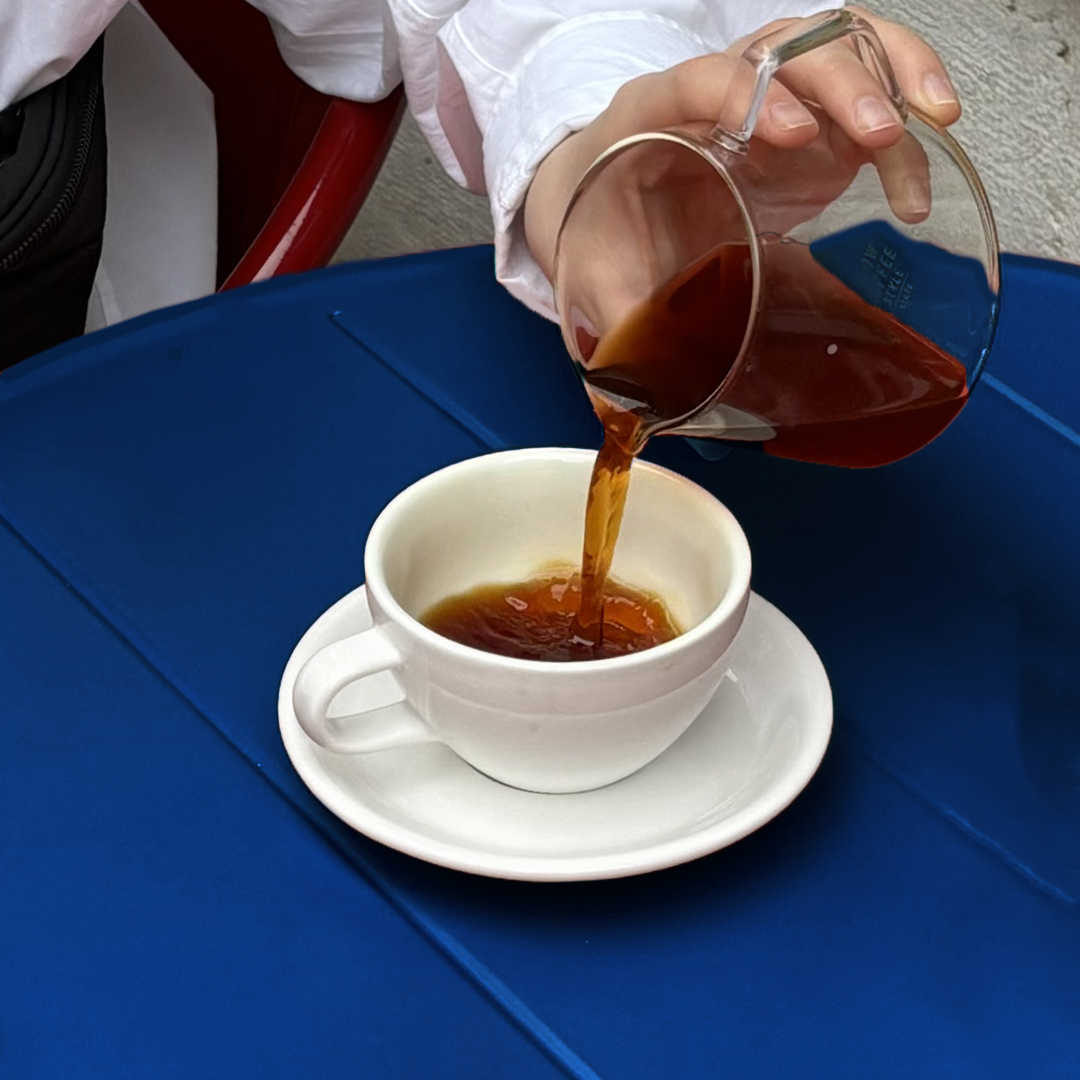
Why Coffee Tastes Better as It Cools: Exploring the Science of Flavour Perception
Have you ever noticed that your pour-over tastes brighter, sweeter, and more complex after sitting for a few minutes? This phenomenon, especially noticeable with light roast filter coffee, has intrigued baristas and coffee enthusiasts for years. But why does this happen? And does it apply to espresso too? Let’s dive into the science behind this flavour transformation.
The Role of Temperature in Flavour Perception
1. Taste Bud Sensitivity
Our ability to perceive taste changes with temperature. Research shows that at higher temperatures (above 65°C), your taste buds are less sensitive to certain flavours, particularly sweetness and acidity. As coffee cools to a more moderate range (around 60-40°C):
- Sweetness becomes more pronounced.
- Acidity softens into fruitier, brighter notes.
- The bitterness often associated with hot coffee diminishes, revealing the coffee’s true complexity.
2. Aroma and Volatile Compounds
Flavour perception isn't just about taste—it's also about aroma.
- Volatile compounds, responsible for coffee’s fruity, floral, or nutty aromas, are more stable at cooler temperatures.
- When coffee is too hot, these compounds dissipate quickly, but as it cools, the slower release allows for a more cohesive flavour experience.
3. Bitterness and Cooling Chemistry
Hot temperatures can amplify bitterness, partly due to how we perceive chlorogenic acids and their degradation products. As the coffee cools:
- These compounds interact less aggressively with taste receptors, reducing harshness.
- Sweetness and body become more noticeable, balancing the brew.
Light Roasts and Cooling: A Perfect Pairing
Light roast coffee is typically brewed to highlight origin flavours such as citrus, berries, or florals. These notes are most apparent at cooler temperatures because:
- The roasting process retains more of the coffee’s organic acids and sugars, which shine as the coffee cools.
- Cooling highlights the balance between sweetness and acidity, two key markers of quality in light roast coffees.
Does This Apply to Espresso?
Yes, but with some differences.
- Espresso is much more concentrated, which can intensify bitterness and acidity as it cools.
- For lighter roast espressos, cooling can bring out sweetness and clarity if extracted well. However, poorly brewed espresso may become harsh or sour when cool.
Key takeaway: Cooling benefits filter coffee more consistently due to its lower concentration and gentler extraction process.
Practical Tips for Enjoying Coffee as It Cools
- Don’t Rush the Experience: Let your coffee cool for a few minutes before judging its flavour.
- Experiment with Brew Ratios: Lighter roasts often perform better at higher brew ratios, allowing their complexity to shine as they cool.
- Take Notes: Jot down flavour changes as your coffee transitions from hot to warm—this can help you refine your brewing technique.
Explore Coffee That Delights at Every Temperature
At After Hours Coffee, we take pride in crafting roast profiles that highlight every cup's full flavour potential. Whether you're sipping a bright Ethiopian or a balanced Colombian, our coffee shines from first sip to the final drop.
Shop Our Coffee Collection and discover your next pour-over adventure.
The next time you brew a cup of coffee, let it cool and explore the flavours that emerge. This simple practice reveals the intricate layers that make specialty coffee so captivating. Whether it’s a juicy filter brew or a carefully pulled espresso shot, temperature plays a critical role in unlocking its full potential.
